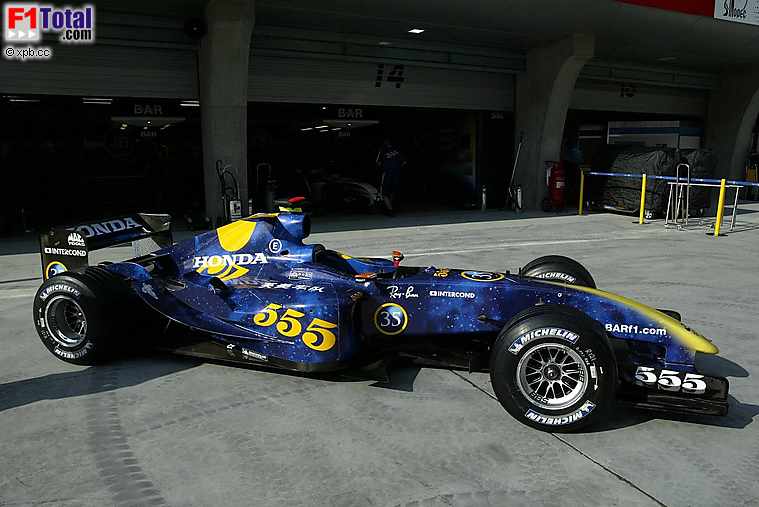Reverie Planetarian wrote:Oh, really? Figures my knowledge of those years was that spotty. ...admittedly, my knowledge of the 1982 season is limited to some snarky recaps of the races at Long Beach and Monaco. What other year, if any, did the 126C series run that funky asymmetrical, extra-wide wing?
Perhaps the one I was looking for was the 126CK, its predecessor. Its mill was a fantastic piece of engineering that kicked Villeneuve to two wins in 1981, but in every other respect it was lacking. Wayward handling and extra lard a serious contender don't precisely make.
But a genuine near-constant midfield runner to me was the Sauber BMW F1.09, successor to the legendarily-funky-looking but reasonably-quick F1.08. This was the year when BMW could, and should have attacked a shaken grid of former front runners after establishing their strength in Melbourne and Malaysia, and when a three-manufacturer battle should have become a five-way brawl with Brawn and Red Bull entering the picture. However, like the rest of the establishment, BMW-Sauber fell off the pace, didn't hone their tuning and let Brawn run away with the championship, Red Bull nipping at their heels.
That wing configuration that Gilles Villeneuve used at Long Beach was only for that race, and resulted in Gilles being disqualified for running an illegal rear wing. The reason that he used that wing, though, was because Ferrari used it as a deliberate snub to FOCA because the FOCA teams, like Williams, Brabham etc. were abusing the rules just as much themselves, if not more so.
Since they were at a considerable power disadvantage, as they were almost all using the Cosworth DFV, the FOCA teams decided to start twisting the rules in their favour to level the score. The rules used to specify that the minimum weight of the car was the wet weight (i.e. with the oil, hydraulic fluid and so forth loaded into the car, but without the fuel). From this, we got the famous "water cooled brakes" scenario, where most of the FOCA cars were fitted with water tanks, and ostensibly the water would be used to cool the brakes. In reality, the water was dumped onto the track, so the cars would be considerably underweight whilst on track, and after the race, the water tanks could be refilled so the cars would be back up to the minimum weight threshold.
Now, in 1982, Piquet Sr. won the Brazilian GP, whilst Rosberg finished second, and both cars were using this particular method of cheating. Renault then proceeded to complain to FISA about this, and eventually managed to get both Rosberg and Piquet Sr. disqualified, which meant that their driver, Prost, was eventually awarded the win. Renault also succeeded in getting the rules changed so the minimum weight was now the dry weight (i.e. with no fluids on board), as a way of shutting off this avenue of rule bending.
Ferrari, instead, decided to show the FOCA teams that if they were going to abuse and break the rules, then Ferrari was happy to play them at their own game and give them a taste of their own medicine. The regulations at the time allowed the teams to use two wing elements on the rear wing; what Ferrari did was to create a wing twice as wide as permitted by putting one wing element on each side of the car. When the FOCA teams complained, Ferrari said "the rules say that you can have two wing elements - it doesn't specify how they have to be mounted", making it clear to FOCA that Ferrari were just as capable of gamesmanship as they were. Of course, FISA took an exception to their design, and Gilles ended up being stripped of his 3rd place, but the point had been made to FOCA.
You're right, though, that the 126C2's predecessor was not a particularly good car. Yes, Gilles did win races with it, but that was mainly down to clever use of his power advantage and strategic driving (basically backing everybody up in slow corners where they couldn't pass, before booting it and making a break for it with his extra power). Still, the 126CK was overweight, the engine suffered from severe turbo lag to begin with and the car suffered from terrible tyre wear (which was still a problem for the next few cars too).


